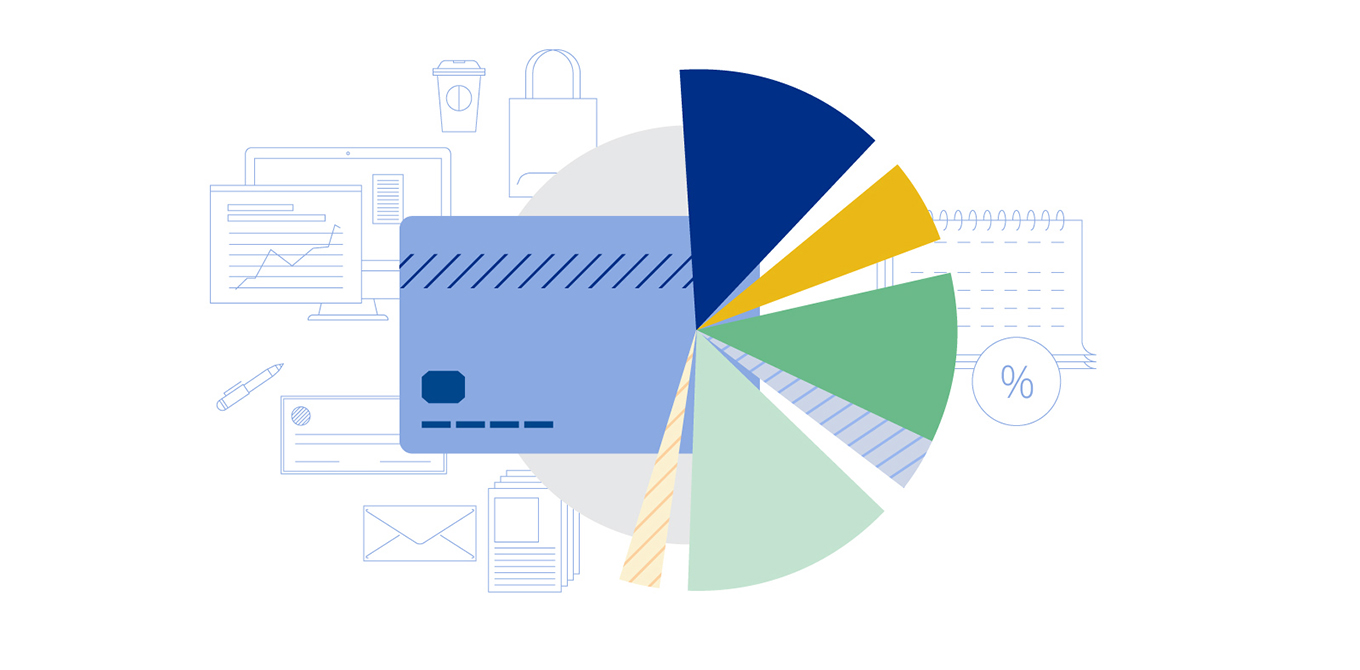How does interest work? (and how it impacts your finances)
Interest plays a role in almost all aspects of personal finance, including savings, credit, and loans.
What is interest?
Interest is money that's automatically added to a starting balance. It can be earned or owed and is shown as a percentage. This percentage represents how much of the original amount you’ll earn or pay.
You can earn interest by keeping money in certain financial institution accounts, such as a savings account or money market account, purchasing a bond, or making other investments. You pay interest when you borrow money through a loan, credit card, or other line of credit.
It’s important to consider interest when choosing a financial institution because the rate that you earn or pay can significantly impact your overall finances.
Interest on Savings
When financial institutions show the interest rates for their savings accounts, they’ll tell you both the nominal rate and the annual percentage yield (APY). The nominal or named rate is the rate the institution pays, while the APY is the rate you earn in a year. What’s the difference? The nominal rate doesn’t include compounding (don’t worry, we’ll get into that more in a second). To state it simply, the APY more accurately reflects how much you’ll actually earn in interest than the nominal rate.
Let’s look at an example. Say you deposited $1,000 into a savings account with a 5% nominal interest rate. If that was the straight interest you earned, you’d end the year with $50 in interest (because 5% of 1,000 is 50). But if the interest compounded, you’d actually earn a bit more. For this example, let’s say it’s compounded monthly. With that, you’d earn about $51.16 in interest, $1.16 more than what would be reflected by the nominal rate of 5%. So, to show consumers what they would actually earn on this account, the APY would be 5.12%.
Simple vs. Compound
Clearly, the type of interest is also very important in determining how interest grows. There are two options: simple and compound. But to understand how either work, you'll need to know about principal. Principal is the original amount borrowed or deposited before interest comes into effect.
• Simple interest: you only earn or owe interest on the principal, and the interest is added to your account annually.
• Compound interest: can accrue daily, monthly, or quarterly and is added to your principal to form a new base. From then on, you’ll earn interest on the principal plus the interest you already earned.
As you can imagine, simple interest rises in a straight line because you’re always earning interest on the same original amount of money. Compound interest, on the other hand, can have a snowball effect. For example, if you deposit $1,000 into a savings account with a 5% interest rate, compounding annually, you’ll earn $50 in interest the first year for a total of $1,050. The next year, you’ll earn 5% of $1,050, or $52.50, for a total of $1,102.50. That base amount you’re earning interest on, and thus the amount of interest you’re earning, will continue to grow exponentially.
Same Account, Different Rates
Some savings accounts, including money market accounts, may pay different rates of interest on different balances or different segments of your total balance. If the rate is tiered, the interest rate goes up as the account balance increases. A blended APY means that you’ll earn different rates on different segments of your balance. Generally, you’ll earn the highest rate only on the top portion of your total balance and lower rates on the bulk of the account’s value.
Interest on Credit Cards
Interest plays a role in the use of credit as well. It’s what makes them potentially dangerous, because you may end up paying more overall when you buy things with a credit card than if you just paid in cash. For every month that you carry a balance on your card, meaning you don’t pay it off entirely, you’ll be charged interest on the remaining amount. That means the best way to buy things with a credit card is to pay them off as quickly as possible.
The most common method for calculating the interest you owe on a credit card is based on the daily outstanding balance on your account, compounding daily. This is the flip side of compounding—instead of helping you grow your savings exponentially, it increases the amount you’ll need to repay to the credit card company exponentially. So that outfit that might’ve cost you $100 at first could end up costing $120, $150, or more, depending on how long it takes you to pay off.
Interest on Loans
Similarly, when you take out a loan, you have to pay back the amount you borrowed (the principal) and the interest that accrues on that amount. A loan’s annual percentage rate (APR) provides a full view of the cost of a loan, because it includes the fees you pay to arrange the loan as well as the annual interest rate. In that way, it’s similar to how an APY works on a savings account. APRs vary widely depending on what’s happening in the economy as a whole. What doesn’t change is that you want the lowest APR you can find, because that means you’re paying less in interest.
The term, or length, of a loan is also important. A shorter loan means higher monthly payments, but a lower amount of interest paid overall because you’re paying interest for less time. For example, if you borrow $10,000 at 10%, you would pay about $322 per month on a three-year loan and about $212 per month on a five-year loan. But the total amount you’d pay back on the three-year loan would be about $11,590, while the total cost on the five-year loan would be $12,700. So, on the three-year loan, you paid a total of about $1,590 in interest, and on the five-year loan you paid $2,700 in interest. That’s a pretty big difference!
Interest is a powerful tool for saving money and growing wealth, but it’s also a key part of borrowing money. In general, you want to look for interest rates on your savings accounts and investments that are as high as possible and rates on the money you borrow that are as low as possible.




